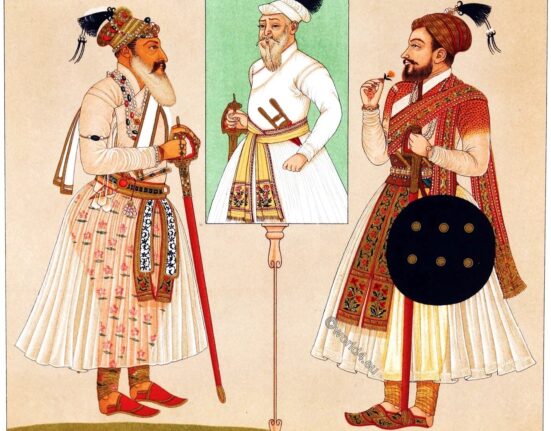Zero (symbol: 0) is a number and the numerical digit used to represent that number in numerals. It plays a central role in mathematics as the [[additive identity]] of the [[integers]], [[real numbers]], and many other algebraic structures. As a digit, 0 is used as a [[placeholder]] in [[place value]] systems.
The concept of zero as a number, distinct from its role as a placeholder, was a significant development in mathematics and one of humanity’s great intellectual achievements. While various cultures used placeholders in their numerical systems, the independent invention of zero as a number is widely attributed to mathematicians in ancient India.
History of Zero
Early Number Systems and the Need for a Placeholder
Prior to the invention of zero as a number, various civilizations developed sophisticated numerical systems. These systems, like those used by the [[Ancient Babylonians]] and [[Maya civilization|Mayans]], employed [[place value system|place value systems]]. In a place value system, the value of a digit depends on its position within a number. For example, in the number 203, the ‘2’ represents two hundreds, the ‘0’ represents zero tens, and the ‘3’ represents three ones.
However, early place value systems often lacked a symbol for zero. The Babylonians, for instance, initially left a space to indicate an empty place value, which could be ambiguous. Later, they used a symbol consisting of two slanted wedges to represent a missing place value, but it was primarily used as a placeholder and not treated as a number in its own right. The Mayan civilization independently developed a symbol for zero as part of their sophisticated calendrical and numerical systems, possibly even using it as a number in some contexts.
Image Suggestions:
- File:Babylonian numerals.svg – Showing Babylonian cuneiform numerals, highlighting the later placeholder symbol.
- File:Mayan numerals.svg – Depicting Mayan numerals, including the Mayan zero symbol.

The Invention of Zero in India
The concept of zero as a number, with its own properties and capable of being used in calculations like any other number, emerged in [[ancient India]]. This pivotal development is closely associated with Indian mathematics and astronomy during the early centuries CE.
The earliest known inscription using a decimal place value system including a zero symbol is found in a Jain text from India called the [[Lokavibhaga]], dated 458 CE. However, the most definitive and influential treatment of zero as a number came with the work of the Indian mathematician [[Brahmagupta]] in his treatise [[Brahmasphutasiddhanta]] (“The Opening of the Universe”), written in 628 CE.
Brahmagupta not only used zero as a placeholder but also defined it as a number and discussed its properties and operations involving zero, such as addition, subtraction, multiplication, and division (although his understanding of division by zero was initially flawed and incomplete). He established the fundamental rules for arithmetic involving zero, recognizing it as distinct from “nothingness” and giving it a concrete mathematical identity.
Image Suggestions:
- File:Brahmagupta.jpg – A possible artistic depiction or representation of Brahmagupta.
- File:India_Ganga_Brahmaputra_delta.jpg – A map highlighting the region of ancient India where Brahmagupta lived and worked.
- File:Bakhshali_manuscript_fragment.jpg – A fragment of the Bakhshali Manuscript, another early Indian mathematical text that demonstrates the use of zero.
Spread of Zero to the Islamic World and Beyond
Indian numerals, including the zero, were adopted and further developed by [[Islamic mathematics|Islamic mathematicians]] during the [[Islamic Golden Age]]. Around the 8th century CE, the Indian numeral system was introduced to the Islamic world, largely through the works of scholars like [[Al-Khwarizmi]]. Al-Khwarizmi’s book On the Calculation with Hindu Numerals (c. 825 CE) was instrumental in popularizing the decimal positional number system with zero throughout the Islamic world.
From the Islamic world, the numeral system and the concept of zero spread to Europe during the Middle Ages, primarily through the work of Italian mathematician [[Fibonacci]]. In his book Liber Abaci (1202 CE), Fibonacci championed the “Modus Indorum” (Method of the Indians), advocating for the adoption of the Hindu-Arabic numeral system, including zero, over the Roman numerals then in use in Europe.
Image Suggestions:
- File:Al-Khwarizmi.jpg – An artistic representation of Al-Khwarizmi.
- File:House_of_Wisdom_Abbasid_Baghdad.jpg – Depiction of the House of Wisdom in Baghdad, a center of learning during the Islamic Golden Age.
- File:Fibonacci.jpg – A portrait or statue of Fibonacci.
- File:Fibonacci_Liber_Abaci.png – A page from Fibonacci’s Liber Abaci, possibly showing Hindu-Arabic numerals.

Resistance and Acceptance in Europe
Despite Fibonacci’s efforts and the clear advantages of the Hindu-Arabic numeral system for calculations, the adoption of zero and the new numerals in Europe was not immediate or universally accepted. There was initial resistance from some quarters, partly due to unfamiliarity and partly due to concerns from certain groups like merchants who were accustomed to Roman numerals for record keeping.
However, the efficiency and power of the Hindu-Arabic system, especially with the inclusion of zero, eventually became undeniable. Over several centuries, it gradually replaced Roman numerals for most mathematical and commercial purposes in Europe. The full acceptance of zero as a fundamental mathematical concept was crucial for the development of algebra, calculus, and much of modern mathematics and science.
Image Suggestions:
- File:Roman_numerals_clock.svg – An example of a clock face using Roman numerals, to contrast with the later dominance of Hindu-Arabic numerals.
- File:Medieval_European_marketplace.jpg – A generic image of a medieval European marketplace, to represent the commercial context of number systems.
Modern Significance of Zero
Zero is now indispensable in mathematics, science, technology, and everyday life. It is the foundation for:
- Modern Arithmetic: Zero is essential for performing basic arithmetic operations and understanding number systems.
- Algebra and Calculus: Zero is crucial in algebraic equations, limits, derivatives, and integrals, forming the bedrock of calculus and higher mathematics.
- Computer Science: The binary system, the foundation of digital computers, relies on the digits 0 and 1. Zero is fundamental in binary code and digital logic.
- Physics and Engineering: Zero is used to represent a null value, a starting point, or a reference point in various physical and engineering measurements and calculations.
The invention and acceptance of zero as a number represents a profound shift in human understanding of mathematics and the world, paving the way for countless advancements in science and technology.








Leave feedback about this